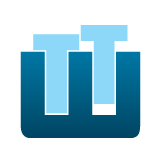The Hot HR Technology Trends Of 2014
Meghan M. Biro
Forbes.com Contributor
It’s been a while since I’ve seen a solid independent survey of HR tech trends that will affect the workplace in 2014. The Information Services Group III -1.56%(ISG), a leading technology insights, market intelligence and advisory services company, recently conducted the ‘Industry Trends in Human Resources Technology and Service Delivery Survey’. Released in February 2014, the survey presents findings, which, while not surprising, should be top of mind for leaders and talent managers everywhere.
The survey points to three benefits companies expect to realize from investments in HR tech (quoting from the report): an improved user and candidate experience, access to ongoing innovation and best practices to support the business, and speed of implementation to increase the value of technology to the organization.
Driving the need for an improved user interface is the coming surge of new talent entering into the workforce. It’s no surprise that many more people, having grown up with technology, expect it to be available, easy to use and responsive to their situations – e.g., having both mobile and social components.
Companies, on the other hand, want HR tech to offer strategic alignment with the business. I see this as more about enabling flexibility in talentmanagement, recruiting and retention, all of which are increasing in importance as more Boomers retire, taking with them their deep knowledge and experience. Companies thus are looking more for the analytics end of the benefit spectrum; the delivery model, also no surprise, will be through cloud-based SaaS solutions.
Also on companies’ must-have lists: data security; data privacy; integration with existing systems, both HR and general IT, and customizability, to align with internal systems and processes.
If you’re in the market for an HCM solution, think about putting these requirements on your RFP list:
- Cloud-based – According to ISG’s report, more than 50% of survey respondents have implemented or are implementing cloud-based SaaS systems. It’s easy, it’s more cost-effective than on-premise software, and it’s where the exciting innovation is happening.
- Mobile/social – Any HCM tool must have a good mobile user experience. This means everything from well-designed mobile forms, ease of access, and a secure interface.
- Simple, intuitive user interface – Whether accessed via desktop or mobile, the solution must offer a single, unified, simple-to-use interface.
- Social collaboration tools – Millennials expect to be able to collaborate via social channels, and HR is no exception. While this may be challenging from a security and data protection angle, it’s a must-have capability.
- Analytics and reporting – Management needs reporting to know their investment is paying off, and they also need robust analytics to keep ahead of trends within the workforce.
Of course, the switch to these modern HCM solutions means companies also need to consider a restructuring of HR – at a minimum to the way in which they deliver HR services to employees.
I believe technology will help companies make the transition as their workforces evolve while enabling them to maintain loyalty, trust, retention and employee satisfaction. Laggards who are slow to adopt technology may find themselves faced with a very limited talent pool. The time to move to SMAC-enabled HR technology is right now – before the workforce changes dramatically with the exodus of baby boomers.





